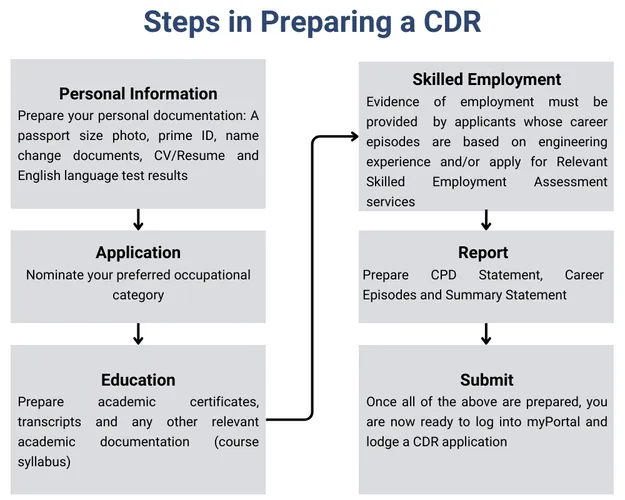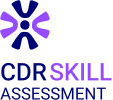Migration Skill Assessment Booklet for Engineers Australia 2024
Migration Skill Assessment Booklet for Engineers Australia 2024
The Migration Skill Assessment (MSA) Booklet is an essential document for engineers who aspire to migrate to Australia. The booklet provides all the necessary information that an engineer needs to know to assess his/her skills and competency level as per the standard set by Engineer Australia (EA).
The MSA Booklet 2024 is an updated version of the previous booklets and comprises all the latest changes and requirements.
If you are looking for a comprehensive overview of the MSA Booklet 2024, including its purpose, components, assessment process, and other important details . Then you are on a right place.
What does the MSA booklet include in the 2024 edition?
The MSA booklet includes a thorough explanation of the assessment process for engineers who wish to migrate to Australia. The booklet includes the following sections:
Section 1: Overview of the MSA Booklet for Engineers Australia 2024
The first section of the MSA booklet provides an overview of the Migration Skills Assessment process for engineers in Australia. This section includes the following topics:
| S.N | Section | Description |
| 1. | Occupational Categories in Engineering: | This section provides an overview of the different categories of engineers that are eligible for the MSA process. |
| 2. | English Language Requirements: | In this section, the required level of English proficiency for the MSA process is outlined. |
| 3. | Pathways for Migration Skills Assessment: | This section covers the different pathways available for engineers to achieve the MSA process, including the different routes for assessment. |
| 4. | Applying Online: | It covers the process of applying for the MSA process online. |
| 5. | Using a Migration Agent: | This section covers the option of using a migration agent to assist with the MSA process. |
| 6. | Assessment Fees and Payments: | It covers the fees and payment methods associated with the MSA process. |
| 7. | The Assessment Process: | This section provides an overview of the overall assessment process and what it entails. |
| 8. | Assessment outcome: | Upon successful assessment, you will receive a migration-ready outcome letter via email. |
| 9. | Appealing the Assessment Outcome: | If the assessment outcome is unsatisfactory, you can initiate the review process. |
| 10. | Ethical Standard: | When applying for a migration skills assessment, strict ethical standards must be adhered to. Prohibited actions include plagiarism, submission of fake documents, or providing misleading information. |
Section 2: Occupational Outcome and Recognition of Prior Learning
The second section of the MSA booklet covers the Occupational Outcome and Recognition of Prior Learning. This section includes the following topics:
| S.N | Section | Description |
| 1. | Occupational Outcome: | This section outlines the expected occupational outcome for engineers who complete the MSA process. |
| 2. | Recognition of Prior Learning: | In this section, the recognition of the prior learning process is explained. |
| 3. | Accords Accredited Qualifications: | This section covers the different accords that are recognized for the MSA process, including:
|
| 4. | Checklist | This section provides a checklist of items to be completed as part of the MSA process. |
Learn more about document checklists for 2024: Engineers Australia Skill Assessment Document Checklist

Source: EA
Section 3: Preparing a CDR
The third section of the MSA booklet covers the process of preparing a Competency Demonstration Report (CDR). This section includes the following topics:
| S.N | Section | Description |
| 1. | Steps in Preparing a CDR: | This section provides a step-by-step guide on how to prepare a CDR. The steps include:
|
| 2. | Components of the CDR Assessment: | This section covers the different components of the CDR assessment, including: |
| 3. | Summary Statement for Professional Engineers | Highlight your engineering skills in the Summary Statement by addressing specific competency elements. For Professional Engineer applicants, showcase your application of each element with brief summaries and paragraph references in your Career Episodes. |
| 4. | Summary Statement for Engineering Technologists | Showcase your engineering prowess by addressing key competency units and elements in the Summary Statement. If you’re applying as an Engineering Technologist, provide a concise summary of how you applied each element, mentioning relevant paragraph numbers in your Career Episodes. Elevate your application with precision and clarity. |
| 5. | Summary Statement for Engineering Managers | Talk about your skills in the Summary Statement by covering these competency units and elements. If you’re applying as an Engineering Associate, provide a short summary of how you applied each element and mention the paragraph numbers in your Career Episodes where you did it. |

Source: EA
Learn More: Best CDR Writing Service in Australia
Section 4: The Assessment Process
The fourth section of the MSA booklet covers the assessment process. This section includes the following topics:
| S.N. | Section | Description |
| 1. | General Assessment: | This section describes the general assessment time for evaluating your CDR report. Normally, it takes about 4-7 months for approval, which is a lengthy process. |
| 2. | Fast Track: | This section covers the fast-track assessment process, which is designed to speed up the assessment process for eligible engineers. By assigning your application to an assessor within 20 working days, you can expedite its processing. Adding Fast Track would cost nearly $330.00, including GST (AUD). |
| 3. | Online Application Process: | You need to submit colour scans of original documents related to your relevant skilled employment and/or PhD online. Failure to comply may result in a 12-month ban, and your details will be reported to the Department of Home Affairs for further investigation and action. |
| 4. | Assessment of Overseas PHD in Engineering: | If you hold an overseas PhD, utilize this service to assess its equivalence to an Australian PhD. Note, this service exclusively evaluates international PhD qualifications, not Australian ones. |
| 5. | Relevant Skilled Employment: | Applicants who require this service must submit colour scans of original documentary evidence.
|
Section 5: Appendix
The fifth section of the MSA booklet includes an appendix that provides detailed information about various jobs, roles, and descriptions of these jobs.
Section 6: ANZSCO Codes
The MSA booklet concludes with a list of ANZSCO codes for various engineering occupations. ANZSCO stands for the Australian and New Zealand Standard Classification of Occupations and helps to classify different occupations based on their skill level, skill specialization, and job duties.
The ANZSCO codes are essential for visa applications as they provide a clear understanding of the skills and qualifications required for each occupation.
Final words
In conclusion, the MSA booklet provides comprehensive information for engineers looking to migrate to Australia. From the occupational categories to the assessment process, the booklet covers all the essential details needed for a successful migration journey.
If you need assistance with your CDR report or have any other questions, consider reaching out to a professional CDR writing service provider like CDR Skill Assessment, to ensure your migration journey is a success.
FAQ’s
- What is Australian qualification?
Australian qualifications are certifications granted by recognized educational institutions in Australia.
These certifications ensure a high standard of education and are recognized not only in Australia but also globally.
- What is Washington qualification?
The Washington Accord is an international agreement focusing on engineering accreditation.
Qualifications under this accord are recognized globally, promoting the international mobility of engineering professionals.
- What is Sydney qualification?
Similar to the Washington Accord, but with a specific focus on accrediting engineering technology programs.
These qualifications facilitate global recognition for graduates in the field of engineering technology.
- What is Dublin qualification?
Another international accord, emphasizing the accreditation of engineering programs.
Qualifications under this accord ensure international mobility for professionals in the field of engineering.
- What is a CDR?
A report showcasing skills and competencies for engineering professionals applying for migration, particularly in Australia. It includes details about work experience, projects, and achievements.

